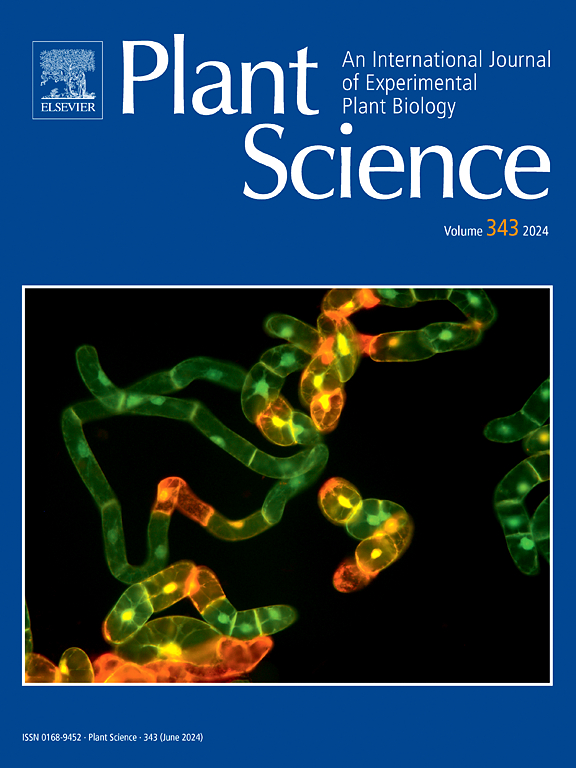综述:限制谷类食品中镉的策略
IF 4.2
2区 生物学
Q2 BIOCHEMISTRY & MOLECULAR BIOLOGY
引用次数: 0
摘要
镉(Cd)是一种有毒金属,在一些生产地区,其含量超过了谷物中的允许限量。因此,降低其在谷物中的浓度对于减轻健康风险和遵守食品安全法规至关重要。本文综述了通过减轻土壤镉污染来减少谷物镉积累的策略及其对植物的生物利用度。它涵盖了土壤中镉的估计方法,并探讨了生物、化学和遗传方法来限制作物对镉的吸收。这些策略的有效性取决于遗传因素、土壤性质和作物类型。关键方法包括传统育种、基因组编辑、数字和预测土壤制图以及硅(Si)和硒(Se)补充。传统育种在现代遗传工具的加强下,能够培育出高产、低镉的品种,但耗时长。基因组编辑,特别是CRISPR-Cas9,提供了精确的基因修饰来减少镉的摄取,但面临监管限制。数字和预测土壤制图为有针对性的干预提供高分辨率地图,但需要大量校准。硅补充是一种很有前途的方法,因为它与Cd竞争吸收位点,并限制Cd转运到可食用的植物部位。此外,硅增强了植物对非生物胁迫的耐受性,使其成为一种多功能解决方案。补充硒还可以减少镉的积累,同时提供健康益处。然而,硅和硒的效果因用量和作物类型而异。结合这些策略的综合方法对于有效减少谷物中的镉至关重要。持续的研究、技术进步和支持性政策对于确保安全和可持续的谷物生产至关重要。本文章由计算机程序翻译,如有差异,请以英文原文为准。
Review: Strategies for limiting dietary cadmium in cereals
Cadmium (Cd) is a toxic metal, which in some production areas reaches levels above allowed limits in cereals. Thus, reducing its concentration in cereals is crucial for mitigating health risks and complying with food safety regulations. This review evaluates strategies to reduce Cd accumulation in cereal grains by mitigating soil Cd contamination and its bioavailability to plants. It covers methods for Cd estimation in soil and explores biological, chemical, and genetic approaches to limit Cd uptake by crops. The effectiveness of these strategies depends on genetic factors, soil properties, and crop type. Key approaches include traditional breeding, genome editing, digital and predictive soil mapping, and silicon (Si) and selenium (Se) supplementation. Traditional breeding, enhanced by modern genetic tools, enables the development of high-yielding, low-Cd cultivars but is time-consuming. Genome editing, particularly CRISPR-Cas9, offers precise gene modifications to reduce Cd uptake but faces regulatory constraints. Digital and predictive soil mapping provide high-resolution maps for targeted interventions but require extensive calibration. Silicon supplementation is a promising approach, as it competes with Cd for uptake sites, and limits Cd translocation to edible plant parts. Additionally, Si enhances plant tolerance to abiotic stresses, making it a multifunctional solution. Selenium supplementation can also reduce Cd accumulation while offering health benefits. However, the effectiveness of both Si and Se vary with dosage and crop type. An integrated approach combining these strategies is essential for effective Cd reduction in cereals. Continued research, technological advancements, and supportive policies are crucial for ensuring safe and sustainable cereal production.
求助全文
通过发布文献求助,成功后即可免费获取论文全文。
去求助
来源期刊

Plant Science
生物-生化与分子生物学
CiteScore
9.10
自引率
1.90%
发文量
322
审稿时长
33 days
期刊介绍:
Plant Science will publish in the minimum of time, research manuscripts as well as commissioned reviews and commentaries recommended by its referees in all areas of experimental plant biology with emphasis in the broad areas of genomics, proteomics, biochemistry (including enzymology), physiology, cell biology, development, genetics, functional plant breeding, systems biology and the interaction of plants with the environment.
Manuscripts for full consideration should be written concisely and essentially as a final report. The main criterion for publication is that the manuscript must contain original and significant insights that lead to a better understanding of fundamental plant biology. Papers centering on plant cell culture should be of interest to a wide audience and methods employed result in a substantial improvement over existing established techniques and approaches. Methods papers are welcome only when the technique(s) described is novel or provides a major advancement of established protocols.
 求助内容:
求助内容: 应助结果提醒方式:
应助结果提醒方式:


